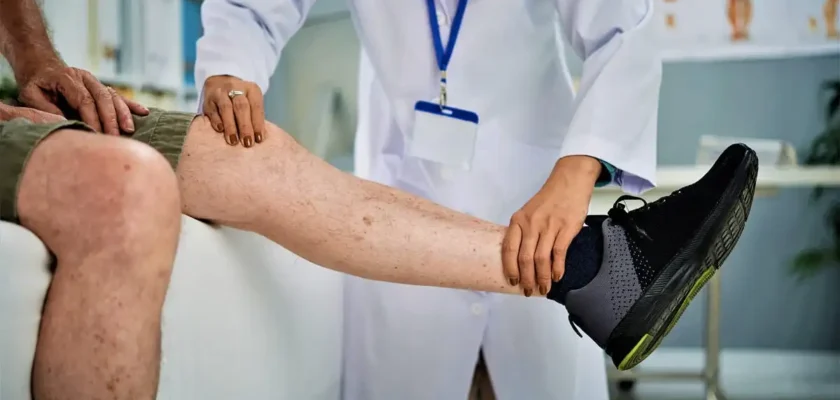Varicose veins affect many people, particularly women. These are enlarged and twisted and can be unsightly and painful, causing discomfort and swelling in the affected areas. While surgical procedures have been a traditional approach, there are now several non-surgical treatment options available.
And you can look for a varicose veins specialist for the best treatment. In this article, explore some of them and learn what you need to know about them.
Sclerotherapy:
It involves injecting a solution into the affected veins, causing them to eventually disappear or shrink. The injected solution irritates the lining, leading to the formation of scar tissue, which closes off the vein.
It is performed in an outpatient setting and does not require anesthesia. Multiple sessions might be required to achieve the desired results or the results you require, depending on the severity of the condition. The procedure has a high success rate and minimal side effects.
Endovenous Laser Treatment (EVLT):
Endovenous laser treatment, also known as EVLT or endovenous laser ablation, is a non-surgical procedure used to treat larger veins. During the treatment, a thin laser fiber is inserted into the affected area or vein under ultrasound guidance. The laser emits energy, which heats and seals it, causing it to collapse.
With time, the treated area is reabsorbed, and blood flow is redirected to healthier veins. EVLT is performed on an outpatient basis, and local anesthesia is usually used to numb the area. It offers a shorter recovery time compared to traditional surgery and has a high success rate.
Radiofrequency Ablation (RFA):
Radiofrequency ablation is a non-surgical technique similar to EVLT that uses radiofrequency energy to treat this condition. The procedure involves inserting a catheter into the affected area. The catheter delivers controlled heat to the wall of the blood vessel, causing it to collapse and seal shut.
Like EVLT, RFA is performed under local anesthesia and does not require hospitalization. The procedure is well-tolerated, and patients can usually resume their normal activities within a day or two. RFA has proven to be effective in treating this condition, with high success rates and low recurrence rates.
Meredith Shirk – Metaboost Customer Reviews – Is It Legit? Weight Loss in Women Above 40
Foam Sclerotherapy:
Foam sclerotherapy is a variation of the traditional sclerotherapy technique. Instead of using a liquid solution, a foam mixture is injected into the affected veins. The foam’s thicker consistency enables it to make better contact with the walls and provide a more effective seal.
Foam sclerotherapy is particularly useful for larger varicose veins that may not respond well to liquid sclerotherapy alone. The procedure is minimally invasive, does not need anesthesia, and can be typically performed in an outpatient setting. Multiple sessions might be required for optimal results.
Compression Stockings:
While compression stockings may not be a direct treatment, they can relieve symptoms and help prevent the condition’s progression. These specially designed stockings apply gentle pressure to the legs, promoting better blood flow and reducing swelling.
Compression stockings are attainable in various compression levels and lengths and can be worn throughout the day. They are particularly beneficial for individuals who spend long periods standing or sitting.
Lifestyle Modifications:
Alongside non-surgical treatments, certain lifestyle modifications can help you manage this condition. Regular exercise, such as walking or swimming, promotes better circulation and strengthens leg muscles, which can alleviate the signs and symptoms and prevent the progression of the condition.
Maintaining a healthy weight elevating the legs when resting, and avoiding prolonged periods of standing or sitting can also help improve blood flow and reduce symptoms. Wearing loose-fitting clothing and avoiding tight garments or high-heeled shoes can aid in the prevention and management of this condition.
Ambulatory Phlebectomy:
Ambulatory phlebectomy, also known as micro phlebectomy, is a minimally invasive procedure. It is performed in an outpatient setting under local anesthesia. During the procedure, small incisions are made near the veins, and a special hook or forceps is used to remove the affected area segment by segment. Ambulatory phlebectomy is particularly effective for larger veins that are close to the skin’s surface.
It offers immediate relief from symptoms and produces excellent cosmetic outcomes with minimal scarring. The procedure usually takes around an hour, and individuals can resume their normal activities within a few days.
Ambulatory phlebectomy is a minimally invasive procedure that can be used to treat varicose veins. It is a good option for people who have varicose veins in their legs, but it is not suitable for everyone.
The suitability of ambulatory phlebectomy depends on a number of factors, including the location of the varicose veins, the size of the veins, and the individual’s overall health.
For example, ambulatory phlebectomy is not suitable for people who have certain medical conditions, such as blood clots or diabetes. It is also not suitable for people who have varicose veins in areas that are difficult to reach, such as the groin or the back of the leg.
If you are considering ambulatory phlebectomy, it is important to talk to your doctor to see if it is the right treatment for you. A consultation with a specialist is necessary to determine whether ambulatory phlebectomy is the appropriate treatment choice for the specific condition.
In conclusion, non-surgical treatments offer a viable option for individuals seeking relief from this condition without the need for surgery. And you can search for a varicose veins specialist for excellent treatment.
Sclerotherapy, endovenous laser treatment, radiofrequency ablation, foam sclerotherapy, and compression stockings are among the techniques available.
However, each treatment option has its own advantages, and the appropriate choice will depend on individual circumstances. Consultation with a healthcare professional is crucial in determining the best course of action.

